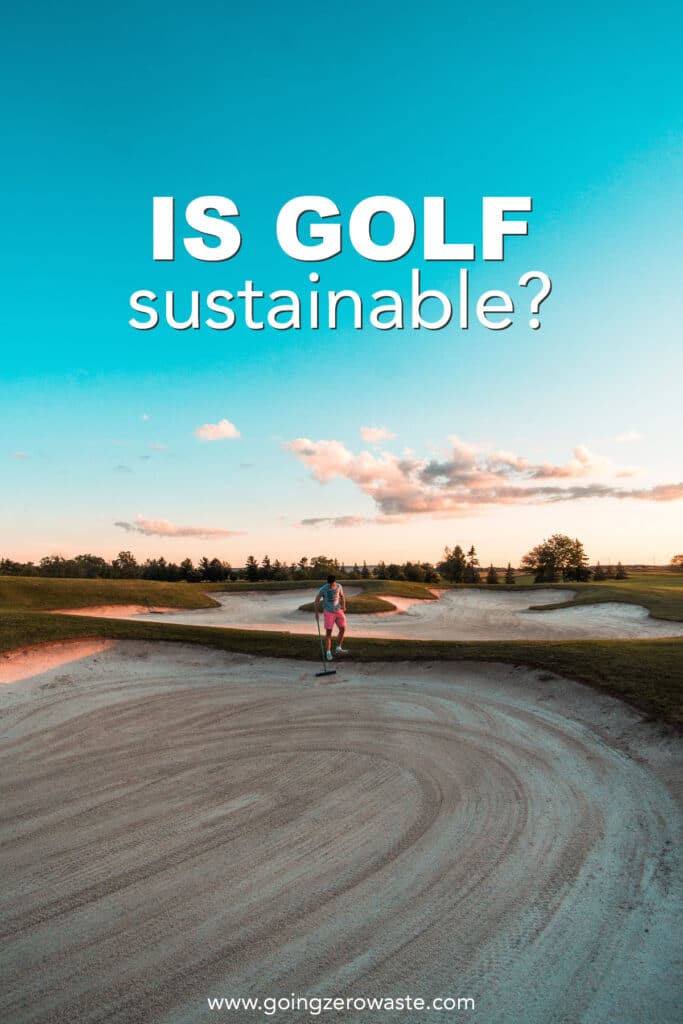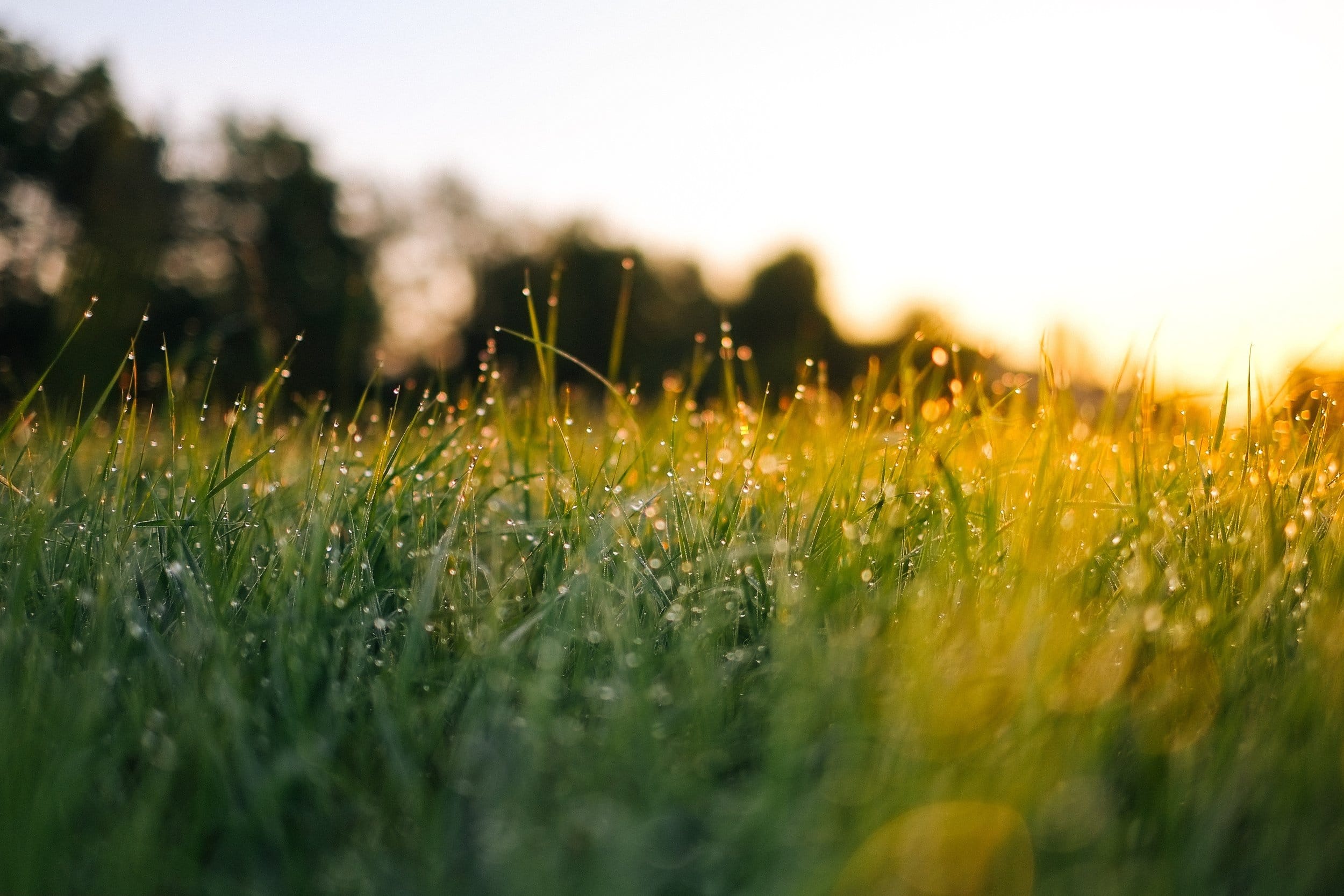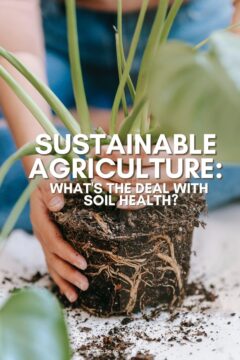Last Updated on January 23, 2024
As many of you know, I took a break for the holidays. I took 15 WHOLE days off!
I was completely unplugged (minus my GPS) and it was amazing. I felt inspired, rejuvenated and had time to work on some of my hobbies.
To be honest, I kind of forgot I had hobbies, but taking this break helped me remember!

Growing up, I was an all-state golfer. My dad is still mad that I turned down golf scholarships to pursue theatre instead.
Things were a little bit different back then, but a lot of women’s golf scholarships were available, so my family got me into golf at a young age hoping I’d get a scholarship. It helped, that I was pretty good at the game. I actually played on the boys golf team in middle school because I was the only girl that played in the whole school!
It was the only sport I actually enjoyed participating in, probably because it involved a lot of walking outside which is still one of my favorite past times.
When I close my eyes to think of a happy place, I just remember the most beautiful scene from Hickory Creek where I used to play in high school.
It was like something out of a dream.
It was so warm, the sun was setting, everything was golden glowing and the trees and greenery were so thick I thought I was in Narnia.
Some of my happiest memories spending time with my dad and friends happened on a golf course.
I thought about picking up my clubs again, but golf courses get a bad rep in sustainability.
I was curious about it after reading this great post on making tennis more eco-friendly and thought, maybe I should do a similar analysis for golf.
And, while I will get into some of those specifics later, I’m really curious about the courses themselves.
Most of the courses I played were very heavily wooded, so there’s lots of trees to absorb carbon, but I started wondering about other aspects of the course, and wondering if they’re really as bad as people say they are?
A problem I have with any movement, is that everything becomes black and white too quickly not allowing for nuance.
Very little in life is just black and white. So, much of what we experience is gray.
And, with everything, I’m sure there are very eco-friendly golf courses and very un-eco friendly golf courses.
I don’t think it’s productive to write off an entire sport. Instead, I hope that we’ll appreciate the gray.
I’ve decided to go ahead and round up some of the most common issues and try to address them head on.
Table of Contents
land use:
There are several issues environmentalists take with golf, one of them being land use.
“All land use has an impact on the environment — the trick is to minimize damage and, where possible, enhance natural values,” from the book Distant Greens by Paul Sochaczewski.
Further, “Golf courses provide green breathing spaces in a concrete landscape and the well-managed turf has many valuable service values — soil protection, water filtering, pollution fixation and biodiversity conservation.
A well-managed golf course can provide more environmental benefits than a poorly managed nature reserve,” he adds.
In the book, Guidelines for Maximizing Biodiversity on Golf Courses, John MacKinnon, a prominent scientist and field biologist argues that “golf and environment can easily develop side by side and golf courses can serve as miniature nature reserves.”
University of Arizona researcher Matt Goode, “There was a time when I would never have considered golf courses as anything but a disaster,” Goode says now he has changed his mind.

“From a wildlife perspective, golf courses hold promise.
If done right, they represent a more compatible land use for wildlife… The more species we can save, the better our chances to preserve biodiversity. That’s why golf courses are important.”
He later goes into more detail of what type of animals are drawn to golf course and how proper management is facilitating their habitats like owls, snakes, birds, bees, butterflies, and amphibians. (read more)
Audubon International has created a certification that helps golf courses protect the environment and preserve the natural heritage of the game with currently over 29% of all courses in the US as members.
While the land use often get’s a bad rep there are many positive aspects as well.
Golf courses can act as watersheds for urban areas, in especially dry areas the lakes can serve as irrigation for the course but also neighboring villages, serve as mini-nature reserves, and act buffer zones between town areas and national parks.
water management:
I’m not sure which one is the biggest complaint, water use or land use? Either way they’re both up there.
Golf courses are notoriously thirsty. After all, to keep the greens, green – it has to take a lot of water.
But, I started wondering about other sporting arenas? Football field and baseball fields have to be watered, mowed, and kept green too – but no one ever talks about them… it seems golf courses are the only ones people have a problem with.
Of course golf courses are much larger swaths of grass compared to a football and baseball arena, but they don’t have all of the concrete and same arena type settings.
As a bonus, all of the food I’ve ever eaten at the club houses, is served on real plates and in real glasses, making it at least more zero waste than food served at stadiums. 😉

So, how much water do these courses really use?
The United States Geologic Survey estimated golf course irrigation accounts for only 0.5% of the 408 billion gallons of water used per day in the U.S.
According to the USGA, “The actual amount of water a golf course needs to sustain healthy turf growth depends on many variables including the species of turf, and the prevailing climate in a given area.
“Scientific studies have determined that various turf grasses require a specific percentage of the water that naturally evaporates from the soil and through the plants, also known as evapotranspiration (ETo).
“This reference number is typically measured by a weather station and models the inches of water that evaporates from a large, deep pan of water that is exposed to environmental conditions.
“Cool-season grasses, such as Kentucky bluegrass, creeping bent grass, perennial ryegrass, and tall fescue generally require only 80% of the total evaporative demand.
Warm-season grasses such as bermuda grass, zoysia grass, seashore paspalum, and buffalo grass use even less at 70% of ETo.
“Golf courses in cooler climates and high rainfall can use less that 1 acre-foot of water per acre each year.
Golf courses in hot, dry climates may require as much as 6 acre-feet of water per acre per year.”

Type of grass seems to be one of the most important things to take into consideration when it comes to water conservation watch this video.
Another key thing that many golf courses are doing, is informing patrons of playability vs. color of the grass. Shifting perceptions of what playability looks like is a huge bonus for saving water!
Most golf courses only water 2 times a week, and the average golf course is 150 acres. And, they’re typically only watering the fairways and greens which is a significantly smaller portion of that.
More than 13% of golf courses are using reclaimed/recycled/gray water for watering cutting that number down further. With more golf courses switching all the time.
what to look for when choosing a golf course:
The USGA has some great guidelines on what to look for when choosing a golf course.
-
Does the course use recycled water?
-
Does the course have written set of maintenance standards? You can see how often the course is watered and how the take care of their lawns and wetlands.
-
Does the course have an environmental plan? What are some of their goals? Water conservation, animal habitat restoration?
-
How are the water featured maintained? vegetated buffers around water features filter the water and provide habitats for wildlife.
-
Is the course a member of the Audubon Cooperative Sanctuary Program
Of course, be sure to check out these five top eco-friendly golf courses that are all certified Audubon Cooperative Sanctuaries.
Sustainability is their top priority providing valuable resources to the communities and of course providing a great past-time/ hobby.
There’s also a completely zero waste golf tournament! The Phoenix Open is hosted by Waste Management every year and there’s not a trash can insight.
The only bins available are compost and recycling bins, and WM employees actually go through and hand sort the compostables and recyclables just to make sure there’s no contamination.
They also host a sustainability forum during the sporting event and I get to attend this year! I’m super excited! Another reason why I wanted to look into the sustainability of golf courses.

the future of golf course development:
As new courses are being built and old courses are being renovated, sustainability is one of the top priorities. Here are ways that golf courses all around the world are stepping up.
New positions are opening up called greenkeeping, through FEGGA, promoting sustainability for golf course management.
More and more sustainability workshops and seminars are being hosted as well. (read more)
While, golf of the past might not have been the most eco-friendly past-time, things are definitely changing.
You can expect to see more wildlife reserves, better water management, composting, and even, solar powered golf carts.
If you’re a golf course designer and managed to stumble on to this blog post… be sure to check this guide out.
how to be more conscious as a golfer:
Of course, as all of this is happening, there’s still more that you can do to be a more responsible player!
The Audobon Society has created a green golfer pledge.
take the pledge:
“We value the nature of the game and accept our responsibility to ensure that golf courses are managed in harmony with the environment.
We pledge to:
-
Be kind to the course: repair ball marks and replace divots to help maintain playability.
-
Walk, rather than use a cart, when possible. Walking promotes physical fitness, healthy turf, and a clean environment.
-
Look for consistent, true ball roll on greens, rather than speed. Lower mowing heights required for fast greens are at the root of many turf and environmental problems.
-
Keep play on the course and stay out of natural areas. Respect designated environmentally sensitive areas and wildlife habitats within the course.
-
Use trash and recycling receptacles and encourage others to do the same. If you see trash, don’t pass it up … pick it up!
-
Appreciate the nature of the game. Watch for wildlife as you play and support the course’s efforts to provide habitat.
-
Educate others about the benefits of environmentally responsible golf course management for the future of the game and the environment.
-
Encourage the golf course to be an active participant in environmental programs.”
opt for secondhand:
In most club shops, you can pick up second hand clubs. You can also rent clubs, if you’re just getting into the sport and not sure you’re going to like it.
Typically golf courses have a dress code of a collared shirt and no jeans allowed.
Thankfully these items would be super easy to pick up secondhand at a thrift shop or on a site like ThredUp or Poshmark.
I personally always wore a polo and a khaki or navy skirt. I’m sure you could find golf shoes on a site like eBay, and I, personally, never liked wearing a glove.
get a better ball:
My next recommendation is to get a better golf ball! I like this one by Wilson.
It doesn’t appear to have any plastic packaging, and it’s made with a recycled rubber core.

my personal conclusion:
Is golf an evil, unsustainable sport that we should boycott and tear down?
No, I don’t think so. Does the game of golf have a way to go in becoming more eco-friendly? Absolutely, but I think it’s well on it’s way and has already made great strides.
Will I pick up my clubs again?
I’m not sure. I’d like to. And, it certainly does help that one of the most sustainable golf courses in the world is pretty close by.
I definitely think there are worse and more wasteful hobbies to have than getting out on the golf-course spending time in nature even if that nature is slightly manicured.
Being on the golf course was one of the main reasons I became interested in hiking and being nature.
It’s probably the root of why I’m a conservationist. I wonder if other golfers feel the same way or if I’m just an anomaly.
I don’t know, but I’m curious to hear your opinion? What do you think about golf courses and sustainability?
For me, I personally thought it was going to be a lot worse, but after doing the research, I’ve come out very pleasantly surprised.
For further reading:












What about Golf Travel? I just know that too many golf places in other countries have caused many many problems. Because they oftentimes are build in places where there’s lack of water and locals don’t have enough water because it gets used for resorts and golf courses (Mexico, Caribbean, etc) mangroves etc got destroyed to build golf courses, and even locals had lost they’re homes because golf resorts got build.
But yes, I read about great eco friendly changes coming so that’s very good news….
Just be even more careful when booking for a golf holiday!
🙂 Great to see your back and empowered 🙂
Jule
Great question! I definitely think there are golf courses doing it right and golf courses doing it wrong. I’ve heard of some doing amazing things for the communities and others, like you said, really screwing up the local area. I don’t think we have any clear cut answers on it, but hope that maybe golfers will stumble on this guide or take the green golfers pledge and look into where they’re traveling!
Thanks, Jule! 🙂
Kathyn,
I love that you have such a non-judgmental approach to conservation. I’ve always been under the impression that golf courses were bad for the environment, but as I’ve spent more time golfing over the past few years, I’ve been really impressed with the natural beauty and wildlife that I’ve seen on various courses. I can definitely think of worse uses for that land.
I think, in all aspects of life, we’d benefit from a little bit of nuance or at least… critical thinking. Lol. Most things just aren’t black and white.
I am new to this blog. I liked your article. I did wonder why you didn’t address the biggest question which is the impact of all those chemicals on the environment. I think that’s the biggest concern when it comes to golfing at its impact on the environment. And, even though golf courses are quite beautiful, I do not consider them nature preserves. There is no bio diversity When chemicals are involved. And you did mention bees as one of the species that can be found there. They are heavily impacted by chemicals, as you know.
Actually most golf courses are highly regulated on any chemicals, pesticides, and fertilizers. Your neighbor’s backyard likely makes a greater impact (per capita obviously) than a commercial golf course.
Great and informative post. 🙂
SPOT ON. I work for a water utility in the conservation department in south Texas. Golf courses were always top users. Always. They even got special variances to water more than once a week in the middle of summer, while all other businesses were limited to once-a-week watering. To make matters worse, they ‘scalp’ the grass, or cut it really short so it is easy to walk/play on. This means the soil is more exposed and can hold water for less time than if it were allowed to grow out. Recycled water is definitely a great option, but not all parts of cities have access to recycled water. For example, our purple pipes (Recycled water) only reach to about midtown San Antonio. There isn’t the infrastructure further north where the luxury neighborhoods and golf courses are for them to use recycled water, so they couldn’t if they wanted to. As such, they easily throw down +100,000 gallons of clean drinking water in the heat of summer. It’s a really hard issue to resolve, but a good one for people to be aware of!!!!
Don’t forget that you are looking at it from your experience in a specific area either. A lot of golf courses in the southwest are switching to effluent water and cities are working to make the infrastructure better to make this possible for them. Also, don’t forget that the golf courses are PAYING for that water. Because of this, most golf courses try to avoid using potable water because it is expensive. However, this also becomes a source of profit for the water provider. There was a course I worked with that was interested in getting off potable water and switching to a mixed (effluent and surface water) water supplier. However, that would mean the city water would lose $700,000 annually because of that and they worked to actually keep that course using the potable water. Like Kathryn said, it is a lot more nuanced than you might at first think. Even when golf courses want to do the right thing, they can run into barriers of their own that makes it difficult
Have you looked into tee brands? I wanted to know if tees are biodegradable or compostable. I use wood ones and avoid plastic ones, but I don’t know if the coating or paint they have makes them not great for the environment. I use the brand Pride Golf Tee and all I can find about this issue on their page is in their FAQs: Are your tees environmentally-friendly?
Pride Golf Tee’s wooden tees are made from 100% solid hardwood, and wood is a biodegradable resource. PTS Performance™, low-resisntance plastic performance tees, are also enviro-friendly.
I think this is a pretty vague response. I’d appreciate if you could look into it or recommend an eco-friendly brand.
While our golf course is eco friendly, our club is not. Lots (and lots) of plastic water bottles, no composting, etc. etc. Does anybody know of standards for golf clubs to follow to be more environmentally responsible? Ernie
Hi. Enjoyed this. Thank you. FYI, Audobon International is imperfect, something of a greenwash, which makes sense. I mean, how can almost 30% of US courses be environmentally sound according to Audobon’s certification programme? No way! Check out the Golf Week special report from 2011, Going for the Green. Also, swing by http://www.themeaningofgolf.com where I’m sometimes to be found writing about golf’s environmental impact and ways to lessen it.
Thanks Kathryn. Keep up your good work.
Craig
I appreciate this post. The most important point is that it’s not black and white. It took me some time to learn that myself. I am a biologist and if you would have asked me 5 years ago how I felt about golf (having never stepped on a single golf course at that time), I would have said, with conviction, that they were all negative to the environment.
However, during my master’s work in biology I stumbled across a golf course, started looking into the science (which I am now a part of) and I realized that I was letting bias rule my judgments before. There is a lot of NUANCE when it comes to golf. There is also confusion because some people see one bad one and assume the worst and others experience great ones and assume rainbows and butterflies.
Here’s the major thing I’ve learned about my own bias. It stems from this concept called the "availability heuristic." It basically says that connections we make more often in our brains or consequences we can calculate more easily tend to get perceived as a higher magnitude. This basically means that because we see golf courses throughout neighborhoods during our daily commutes, we can build these biases in our heads. For example, water consumption is the major one. Seeing golf course sprinklers go off makes a lot of people assume they are wasting water. I used to think the exact same thing. You have to look at the numbers though. In the state of AZ where water is obviously more regulated and of higher concern, golf only uses 1.9% of the total state water use. Agriculture uses 70% of the water. It’s also been shown in several studies that golf course managers have more restrictions and are more careful about using water and chemicals than homeowners. It’s absolutely true that your neighbors are likely being more wasteful than the golf course is (and that adds up).
I would also like to mention land use, being that biology is my background and what brought me unexpectedly to the golf industry. Golf courses do preserve native habitat because of the out-of-play areas. In an urban environment, golf courses actually have a high ecological value because they are one of the last remaining green spaces. In fact, they can even have a higher ecological value than other green spaces like neighborhood parks or cemeteries simply because golf courses usually have a more heterogeneity in their landscape (which provides a greater variety in habitat). However, I will say that ecological value goes down the further away from urbanized areas you get.
Each course has to be looked at individually. The net positive/negative effects of a course really comes down to management practices. Research on golf courses is emerging (people looking into ecosystem services vs disservice, organism population studies, carbon sequestration abilities, not to mention economic and social impacts, etc.). It is an industry to keep your eye on for sure and it is exciting that they are stepping forward towards more and more sustainable practices. As you mentioned, the Waste Management Open is a zero waste golfing event in Phoenix. It is also the most attended event in golf so that is not small feat.
In my experience, the maintenance side of golf facilities is more focused on net neutral or net positive impacts. I would say the spot that needs the most attention right now with sustainability practices are the clubhouses. This is an important point. Sometimes the clubhouses and the maintenance facilities are managed by separate entities. The maintenance side of operations usually seems to be more focused on their impacts. I see a lot of room for improvement at the clubhouses though.
In the end, it’s important to recognize our own personal bias going into a topic and try to mitigate that. As a scientist, one of our most used, and most hated, phrases is, "it depends." That is definitely true here.
All I can say, is try the new generation Pointfive "Hybrid" MD golf ball developed for quick-play on smaller land & water saving golf facilities. This Hy-performance ball has been smart-designed, addressing the playing issues of the game and environmental issues of the course.
Thanks for posting this piece. As the retired founder of Audubon International and the creator of the Audubon Cooperative Sanctuary Program, I would like to respond to both some items in your post and to at least one commenter below. The word "sustainability" is being tossed around a lot these days, and to me, many people are simply using the term as a new "spin" on environmental stewardship. Sustainability is based on actions that put equal attention to environmental stewardship, economic viability, and social betterment. I created the Audubon Cooperative Sanctuary Program to offer education and motivation aimed at people who manage golf courses, that being primarily golf course superintendents. The education was directed at convincing course managers that it made economic, environmental and social sense to assess their operations and reduce the use of non-renewable resources (like water for example), while at the same time increasing the use of native plants, reducing the amount of turfgrass and so forth. It was never my intention to fool the public into thinking that a golf course could become equivalent to a wildlife sanctuary. On the other hand, when compared to many, if not most types of land-use and development, I would challenge anyone to find a development of any sort that does more to integrate nature into the fabric of their land. Regarding the one comment below, there was never any intent to "greenwash" anything regarding our efforts to encourage more environmental stewardship on golf courses. Secondly, the word is spelled Audubon…not Audobon. Cheers, and keep up the great work inspiring your readers to reduce and eliminate waste.